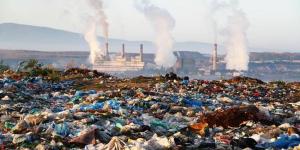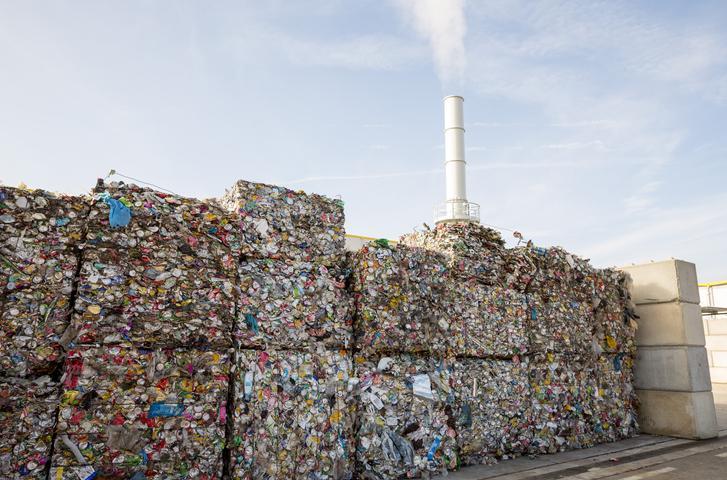What Is Industrial Waste?


An increase in industrial waste is due to the increase in population numbers and the anthropogenic activities we collectively carry out. We might not associate our daily consumption as being related to industrial waste, but almost everything we do requires materials which have been produced by industrial processes. This varies according to the individual and many of us are making efforts to reduce the amount of personal waste we produce. However, the amount of waste we produce on an industrial level continues to grow exponentially. While all types of industrial waste create environmental problems, some are more dangerous than others. This requires careful industrial waste management to ensure it is disposed of as safely as possible.
We learn more about these management process at thedailyECO as we ask what is industrial waste? In addition to providing a definition, we look at the different types of industrial waste and how each is manage individually or collectively.
What is industrial waste?
A simple definition of industrial waste is that it is the waste matter produced by industrial processes. These industrial processes include manufacturing, chemical production, agriculture and many others. Industrial waste is defined by having no value since its general use is either not possible or not cost effective. This is often not because there is no way to reuse the waste, but because doing so would not be profitable.
While there are many different types of industrial waste, all can be categorized into the following states:
- Solid waste
- Liquid waste
- Gaseous waste
Each state of industrial waste has their own difficulties in terms of management. Solid waste takes up space, but liquid and gaseous waste can be difficult to contain. Poor containment is a key problem with industrial waste since it poses a risk of contaminating and polluting the environment. This is why industrial waste management is so important for nature and global societies.
Industrial waste is often mixed in with municipal waste. The latter is the waste which is produced by citizens in urban areas, for example from homes and businesses. While there is some overlap, municipal waste is not derived from industrial processes.
Learn more about the types and classifications of solid waste.
Examples of industrial waste
As we have already explained, industrial waste derives as a byproduct of various industrial processes. It can exist in its separate forms, but it is common for different types of industrial wastes to mix with each other. With this in mind, some examples of industrial waste include the following:
- Used industrial oils
- Contaminated rags
- Solvents
- Paint
- Batteries
- Contaminated plastics
- Containers for dangerous substances
- Inks
- Sand
- Glass
- Paper
- Cardboard
- Debris
- Chemical materials
- Corrosive agents
- Organic waste
Not all these examples of industrial waste pose the same environmental risks. Learn more with our article explaining what is organic waste?

Types of industrial waste
Waste can be classified according to its origin. In this way, the types of industrial waste are categorized according to the manufacturing processes involved in each industry. For example, a paper plant will create chemical waste due to the need for their use in treating paper. In this way, we can see the following are types of industrial waste:
- Chemical waste: as stated above, chemicals are used for various processes which treat other products. The making of certain chemicals also creates its own waste, such as the gaseous waste produced by various chemical reactions. These chemicals range greatly in terms of safety, with some causing serious public health hazards.
- Extraction waste: the mining industry produces a large amount of waste, often in the form of sludge and other waste produced after the valuable material is extracted. Fracking is an industry which has been very controversial in the potential harm its extraction waste produces.
- Agricultural waste: arable and pastoral farming is used to feed the planet. While there are various approaches to agriculture, all farming practices produce some level of waste. This waste can cause severe environmental degradation such as the use of inorganic fertilizer polluting groundwater.
- Paper and wood waste: this can be from the paper milling industry directly, but also from other industries such as industrial-scale printing.
- Metal waste: especially in heavy industry where very large products are manufactured, metal trimmings, slag and other products are created. Since these metals can be valuable, waste management is often employed to try to reuse the materials.
- Process waste: general term for the waste produced by various industrial processes. These include residues, scrap material and even defective products that cannot be repurposed.
- Plastic waste: plastic is used in everything from medical instruments to food packaging. Its perpetually growing use has resulted in a lot of problems with plastic waste.
- Rubber waste: similar to plastic, various materials used in rubber production can result in this type of industrial waste.
- Medical waste: in the pharmaceutical and health industries, medical waste is often produced. This includes expired medications, chemicals used in drug production, packaging waste and used medical supplies. Due to the nature of medical waste, it can often provide a serious health hazard.
- Transport waste: since the transport industry is one of the largest heavy industries in the world, the amount of waste in vehicle production and other transport manufacturing industries is massive.
- Textile waste: fabric production on an industrial scale produces waste in the form of leather scraps, chemical dyes and other finishing processes.
- Electronic waste: whether directly or indirectly, the use of electronic equipment is a massive source of waste. Especially since various industries need to update obsolete technology, this can produce a large amount of waste such as batteries, circuit boards and other electronic components.
- Food processing waste: food processing can create various types of solid, liquid and gaseous waste for use in production, packaging and other processes.
Classification of industrial waste
We have provided detailed information on the different types of industrial waste, but these can be classified into more general categories. These include the following three main blocks:
Inert waste
They are non-hazardous industrial waste materials that don't not need to be treated before final disposal. They generally do not pose a threat to the environment or human health. When they are collected, they can sometimes be used for land reclamation. Others may simply be added to landfill. Although they do not contain harmful materials, landfills can produce other forms of pollution.
Non-hazardous organic waste
This is biodegradable waste which does not contain hazardous material such as pathogens. They include food waste, agricultural waste, paper and other types of biodegradable waste. They can be used for other purposes such as biofuel production or the creation of organic fertilizer.
Special or hazardous waste
These forms of industrial waste are those that pose a threat to the health of humans and the environment. They will need a more specific treatment for safe disposal. Sometimes the technology is not available to treat them and they must be stored in well-sealed containers to prevent environmental pollution.
Learn about the different types of air pollution which can be produced by industrial waste.

Industrial waste management
As we have seen throughout this article, industrial waste creates various environmental and public health hazards. To mitigate these hazards, an industrial level of waste management is required. This is a system of strategies which can treat, reuse or dispose of industrial waste in a way which should be as safe as possible. A good industrial waste management system uses a sustainable approach to reduce waste as much as possible. Unfortunately, not all industrial waste management strategies are as effective or as sustainable as the others.
Generally speaking, industrial waste management occurs in the following stages:
Generation of industrial waste
There would be no need for industrial waste management if no industrial waste was generated. The waste needs to be classified and separated according to various factors, including its level of danger and physical-chemical characteristics. This is important since not all waste can be treated in the same way, so mixing different types of industrial waste together can cause significant problems in waste management.
Accumulation and storage of industrial waste
Waste is collected and stored separately at the point of generation. At this point, leaks and spills need to be controlled to avoid mixing materials and polluting the environment. For this stage, storage and packaging solutions need to be implemented to ensure leaks do not occur. These need to be resistant to the waste materials, as well as labelled and monitored accordingly.
It is very important that once the containers are full, they are closed tightly to prevent spills, especially when transported to the storage location. Waste must comply with various storage standards, since it cannot be stored for more than a certain time (this will depend on the type of waste). As a result of the lack of infrastructure to treat them, this is sometimes not achieved and seriously complicates industrial waste management.
Transport of industrial waste
The transport of industrial waste must comply with the current laws of each country. The vehicle must carry a technical sheet of the waste and the driver must have a license that allows them to transport it legally.
Treatment and final disposal
The treatment is carried out so that industrial waste harms the environment and people's health as little as possible. To do this, its physical, chemical and biological characteristics are changed. The treatments will depend on the type of industrial waste. For example, hazardous industrial waste is not treated in the same way as non-hazardous industrial waste. Some examples of industrial waste treatments are:
- Physical-chemical
- Biological
- Thermal
- Landfills
- Recycling
- Encapsulation
Radioactive materials are one of the most difficult to treat and dispose of. This is why nuclear industries face serious problems in terms of sustainability and pollution. Learn more with our article on what is radioactive waste management?

If you want to read similar articles to What Is Industrial Waste?, we recommend you visit our Recycling and waste management category.
- Kumar, A., Thakur, A. K., Gaurav, G. K., Klemeš, J. J., Sandhwar, V. K., Pant, K. K., & Kumar, R. (2023). A critical review on sustainable hazardous waste management strategies: a step towards a circular economy. Environmental science and pollution research international, 30(48), 105030–105055. https://doi.org/10.1007/s11356-023-29511-8
- Gaur, V. K., Sharma, P., Sirohi, R., Awasthi, M. K., Dussap, C. G., & Pandey, A. (2020). Assessing the impact of industrial waste on environment and mitigation strategies: A comprehensive review. Journal of hazardous materials, 398, 123019.
https://doi.org/10.1016/j.jhazmat.2020.123019







